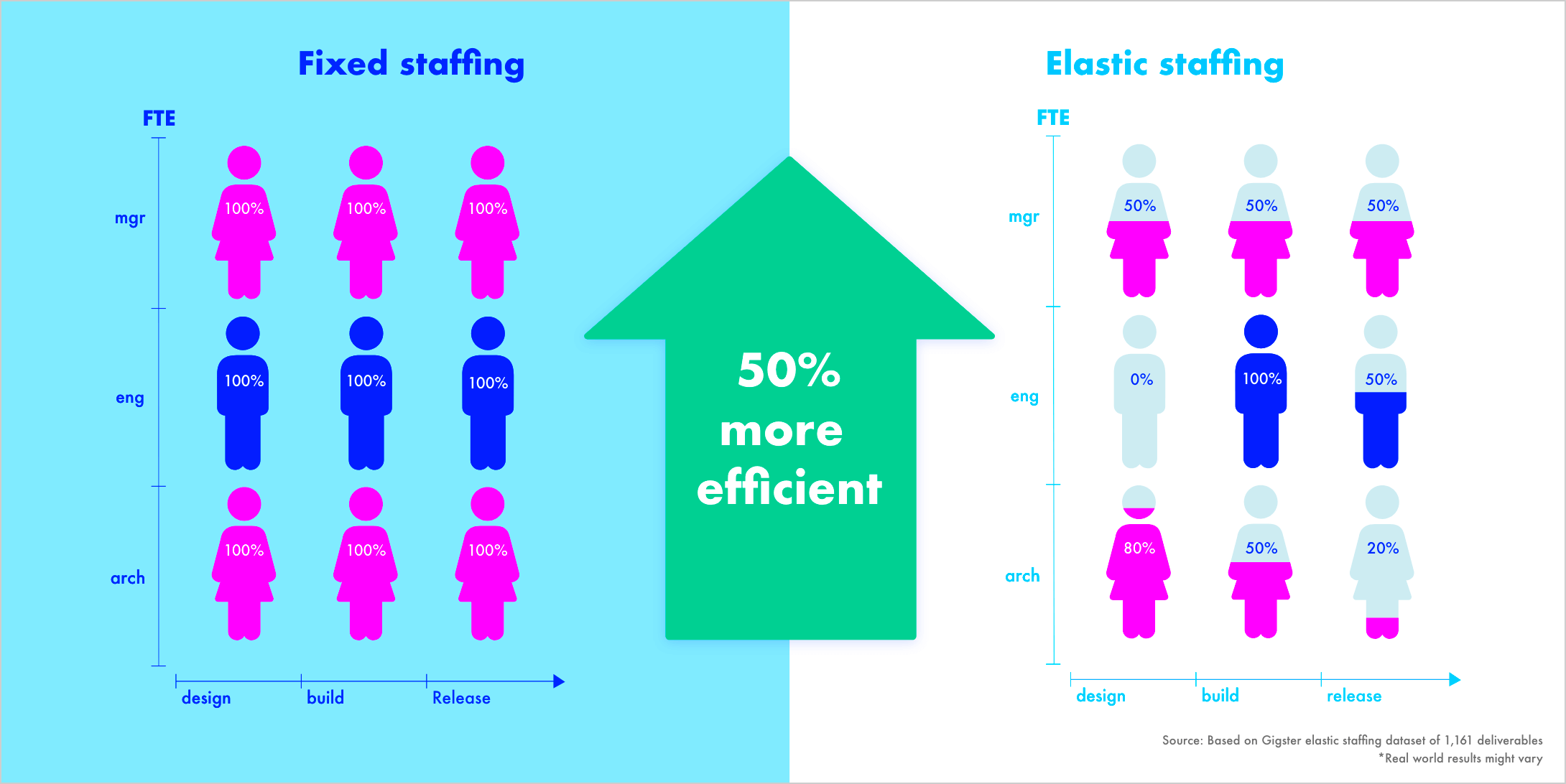
Why would a business invest millions to attract top digital talent, then throw half of their investment away because they still use an outmoded staffing approach? Unfortunately, businesses do it all the time. The traditional fixed staffing model dictates that application development teams have to be staffed with full-time resources.
But we’ve developed over 1,100 enterprise applications, and our experience shows that this approach reduces productivity 50%, and raises your project risk and employee turnover in the process.
Fixed staffing wastes time and money:
Locking developers into a single, long-term project is 50% less efficient than staffing just-in-time and part-time.
Fixed staffing increases risk:
When top talent is locked into a single project, they QA their own work. Peer review by professionals who are not directly involved brings fresh eyes to the project, eliminating home-team bias and reducing risk by 70%.
Fixed staffing can lead to employee turnover:
The best employees like variety, challenges, and opportunities to build new skills. These opportunities are rare when they’re trapped on long projects with frequent delays and limited learning potential.
The same Silicon Valley leaders who pioneered agile and lean startup processes have also reinvented project resourcing to optimize productivity. Their solution to attract the best talent, support rapid development, and create the next round of digital innovation is Elastic Staffing.
There is impressive research that it’s more productive to evolve from a scarcity-driven mindset to a mindset that recognizes the abundance of talent worldwide. In her book, “Mindset, the new Psychology of Success,” Stanford Professor Carol Dweck describes a growth mindset as the key to overcoming challenges and reaching higher achievement. Elastic Staffing lets IT adopt a growth mindset about talent and teams.
For this approach to succeed, an enterprise needs to already have agile development processes in place, along with distributed teams and modern development tools.
The key elements of Elastic Staffing are:
Just-in-time:
Staff resources only for the parts of the project where they are needed. For example, why pay for developers to sit around during the scoping and design phases?
Part-time:
Staff resources only for the amount of time they are needed. For example, let technical architects and ML specialists serve part-time roles across different projects.
Distributed teams:
Encourage talent to work remotely, reducing the switching costs for employees and making it easier to plug in freelancers for specialized roles. When IT adopts a growth mindset with Elastic Staffing, companies can realize impressive gains:
More efficient:
Developers can work on more projects and be 50% more productive when they are engaged just-in-time and part-time.
Reduces risk:
Top talent is available to peer review deliverables from other projects, improving quality and reducing delivery risk by 70%.
Reduces employee turnover:
Employees get more variety, and have more opportunities to grow their skills and learn from their peers.
Enables unlimited capacity:
Enterprise IT can use freelancers to back up in-house staff with key skills as needed, giving them effectively unlimited capacity. For companies to succeed today, growth should be Priority 1, 2, and 3, according to this McKinsey interview with Unilever’s CEO.
Over the last 5 years, Gigster has helped over 500 enterprises leverage elastic staffing to become digital innovation leaders.
